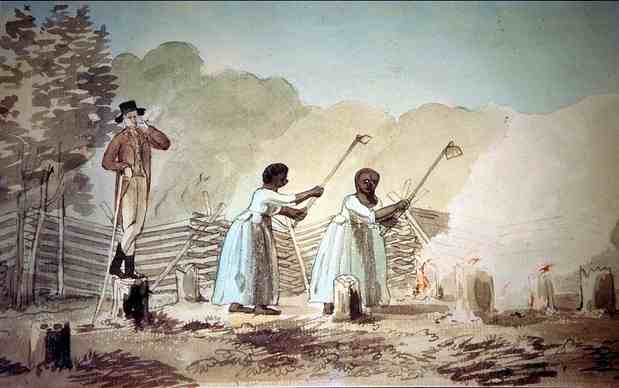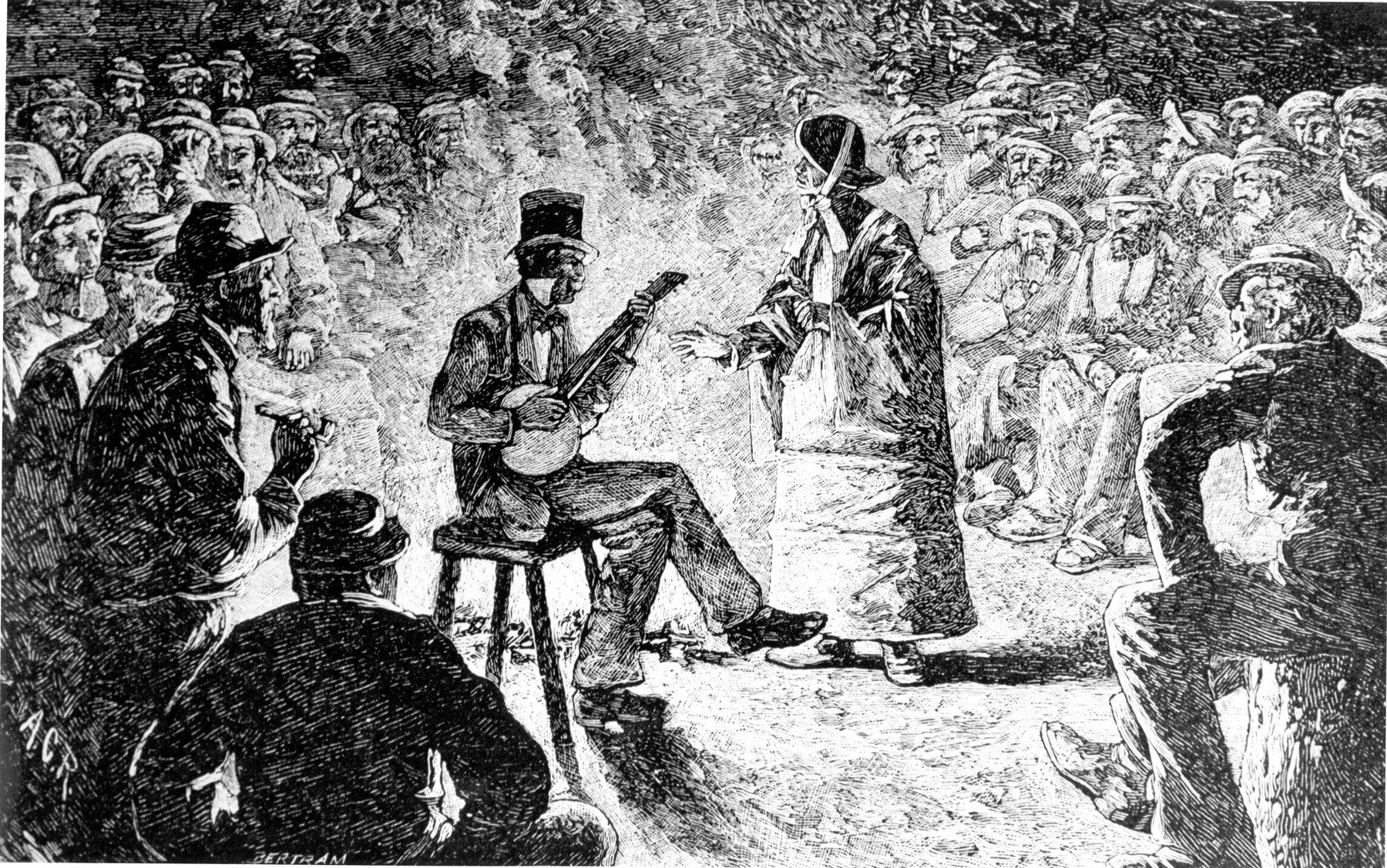African-Americans in the Civil War (Part 1)

Part one in a series
African-Americans were freemen, freed men, slaves, soldiers, and slave-owners during the Civil War. As a historian, I must be objective and discuss the facts based on my research. Some of our history maybe different from how it has been previously taught, and some of it is not very pretty. I have heard and learned from several noted Civil War historians, that we must confront the truth about our history and educate the larger community of what we know about this time period. We must look at the past from the past, going forward, and not by looking backward. We can no longer be politically correct for our time period, when speaking about our history of 150 years ago and even many years before then.
I have participated in several programs with John Hennessy, chief historian of the Fredericksburg and Spotsylvania National Military Park, and slavery has been a frequent topic in most of them. Along with that topic, we have addressed emancipation and black soldiers. As we celebrate the Sesquicentennial of the American Civil War, the National Park Service has required us to discuss the causes of the Civil War and has even published a booklet titled Slavery: Cause and Catalyst of the Civil War. I like to be a little more specific and say that the extension of slavery was the cause of the Civil War, as many Americans in the North would have been happy to keep slavery where it already existed.
In 1860, both the North and the South believed in slavery and white supremacy. Although many northerners talked about keeping the federal territories free land, they wanted those territories free for white men to work and not compete against slavery. The two parts of the country had two very different labor systems; in the South, it was slavery. Its four million slaves were valued between three and four billion dollars in 1860. Most people do not think about the amount of wealth that the South would lose if it had given up slavery. Today, we only think that it was morally wrong.
At the Park, I have seen copies of the estates of some of the slaveowners in Fredericksburg and Spotsylvania County and the value of their slaves were their most valuable assets. In fact, after the Civil War, the net worth of J. Horace Lacy, the owner of both the Chatham and Ellwood plantations, was approximately $2,000, because of the loss of his slaves and destruction of his properties.
Abolitionists, a very vocal minority of the North who were anti-slavery activists, pushed for the United States to end slavery. After the John Brown raid of 1859, Southerners thought that the majority of Northerners were abolitionists, so when Abraham Lincoln was elected President in 1860, they felt that their slave property would be taken away.
There was a coalition of people, black and white, Northerners and Southerners that formed a society to colonize free blacks in Africa. The American Colonization Society was able to keep this mixture of people together because the various factions had different reasons for wanting to achieve the goals of this society. In fact, even President Abraham Lincoln believed that this would be a solution to the problem of blacks being freed during the Civil War.

The South seceded from the United States because they felt that their slave property was going to be taken away. When reading the secession documents, the primary reason was to protect their slave property. “States Rights” were not clearly defined, other than the right to own slave property and not to have equality of the races. There was an exception, many of the documents denounced the Northern states for not enforcing the Fugitive Slave Act of 1850 or for their anti-slavery feelings.
When the Civil War breaks out, African-American men volunteered for both the North and the South. Both sides used black men as laborers and servants, but neither enlisted them as soldiers in the armies – with a few exceptions. Each side stated that this was a white man’s war; however, the South authorized black men to form a militia: the Louisiana Native Guard was formed for the defense of New Orleans.
After the Battle of Antietam, President Lincoln issued the preliminary Emancipation Proclamation, a document that changed the war from being just about saving the Union to a war about freedom for the slaves. The Emancipation and the Second Confiscation Act allowed for the use of black men in the military. However, many Americans, including free blacks and slaves, believed that this was a war over slavery from the very beginning!
Throughout the war, there are stories of black men fighting for the South; however, there are no official black southern soldiers until March of 1865. Although there was talk of thousands of blacks fighting for the Confederacy, I have found very few blacks on the rosters of the Confederate armies.

The Union Army began using black soldiers in 1862, and the United States Colored Troops were officially formed in 1863. Eventually, approximately 200,000 blacks would fight in the Union armies and navies. During Reconstruction, the 13th 14th and 15th amendments to the Constitution abolished slavery and gave citizenship and equal rights to African-Americans.
I will now spend a little time discussing the groups of African-Americans during this time period. There were slaves, free blacks in the North and the South, and then we had the soldiers. In Reconstruction, there were black lawmakers. I will give you examples of each of these groups of black Americans.
According to the 1860 census, there were approximately 4 million slaves in the South and 18 slaves in the North – all 18 in New Jersey. There were two broad categories of slaves at that time, agricultural slaves and urban slaves. Most of us are familiar with agricultural slavery, the system of slavery on the farms and plantations. On the plantations, there were house servants and field hands, the house servants were usually better cared for, while field hands suffered more cruelty. Let me say at this point that some slave-owners treated their slaves very well, some treated their slaves very cruelly and some were in between the extremes.
Field hands generally worked the fields from sunrise to sunset and were generally watched by their slave owners and or overseers. House servants were much closer to the families who owned them and in many cases were very loyal to their families. In many cases, the house servants were related to their families. As Mary Chestnut talked about in her famous diary, many of the slave owners and their male offspring would have children with their slaves.

Slaves and free blacks were often classified by their percentage of white blood. For example mulattos are half-white, quadroons are one-fourth black, and octoroons are one eighth black. In fact these slaves were more valuable than black slaves were. The lighter women were often used as concubines and prostitutes. Some abolitionists thought it was hypocritical of Southern planters and Northern Democrats talking about race amalgamation if slaves were freed, when most of the mixed race people were slaves or former slaves and their descendants – fathered by plantation owners, their male relatives and friends, and overseers.
Urban slaves had much more freedom, as they lived in the cities and towns. Although some plantation slaves had become craftsmen, most of the urban slaves were craftsmen and tradesmen. They worked in factories, stores, hotels, and in houses.
Only about 25% of Southerners own slaves and some of those slave-owners were African-Americans. Slavery was a racial system and no less than Thomas Jefferson helped establish its status in his Notes on the State of Virginia (PP 264-271). He stated, “This unfortunate difference of colour…is a powerful obstacle to the emancipation of these people. Among the Romans emancipation required one effort. The slave (who was white), when made free, might mix with, without staining the blood of his master. But with us a second is necessary, unknown to history. When freed, he is to be removed beyond the reach of mixture.” This is how most white Americans, North and South, felt in 1860.
Where did you get the figures for slaves in NJ. I was under the impression by 1860 they were deemed apprentices I am curious as to the number.
I read this number in the book “Calculating the Value of the Union: Slavery, Property Rights, and the Economic Origins of the Civil War,” by James L. Huston. It was based on the 1860 Census.
Thank you for sharing the whole story!
It makes me very happy to see African Americans is the number one read article on this wonderful blog. With all the awful immature destructive language and actions going on in America these days it’s glad to see but some of us are intelligent and respectful enough to have an interest in how slaves coped with the brutal harsh disgusting circumstances they lived in. It is amazing how many of them blossom despite their circumstances and how many ran joined the Union Army after the way they were treated by white people.